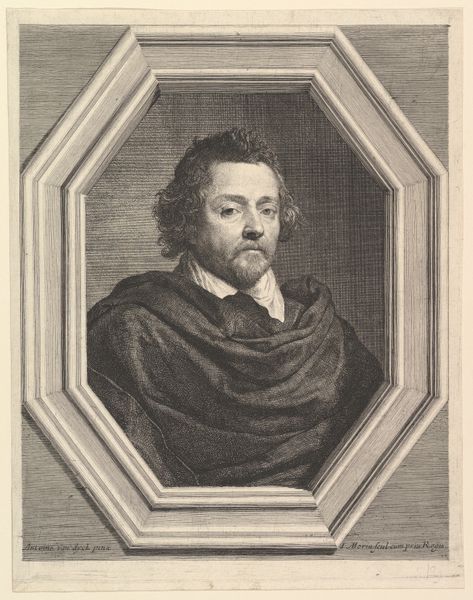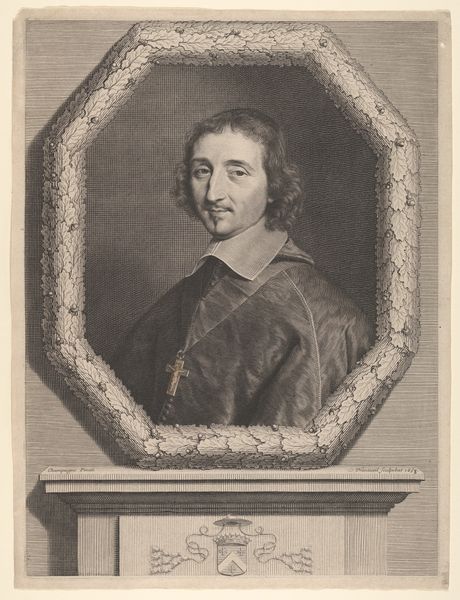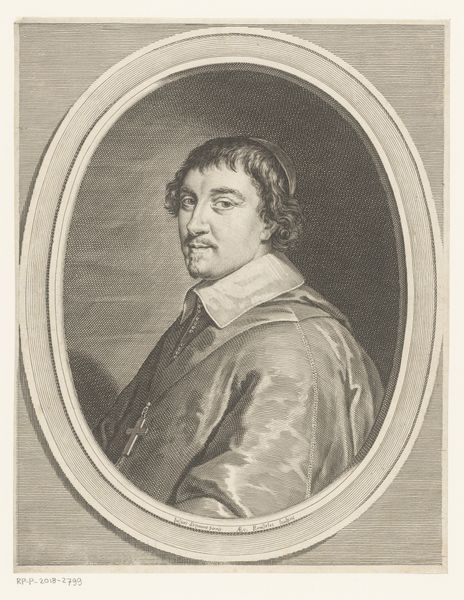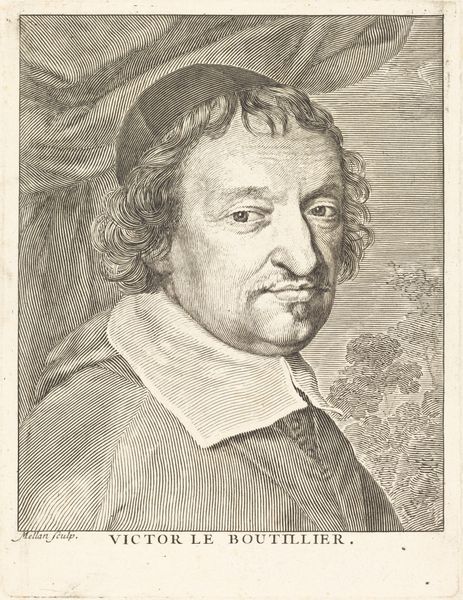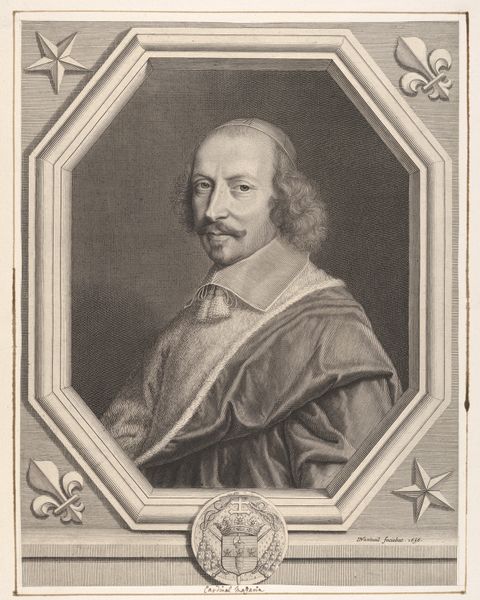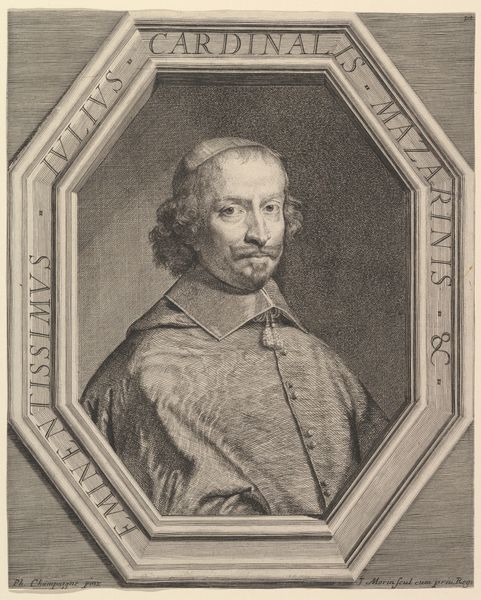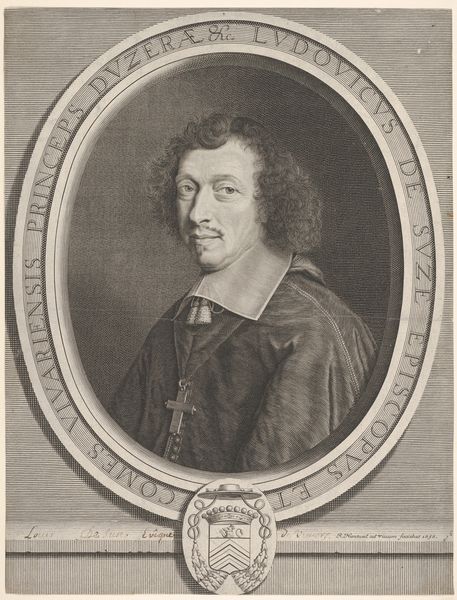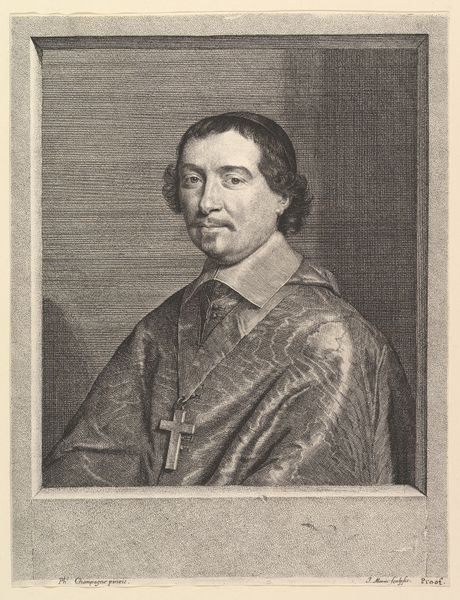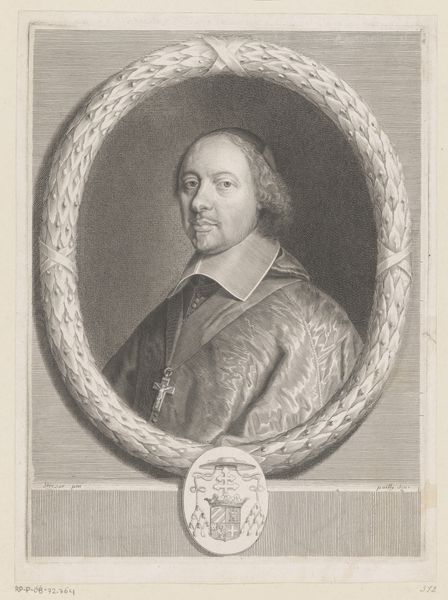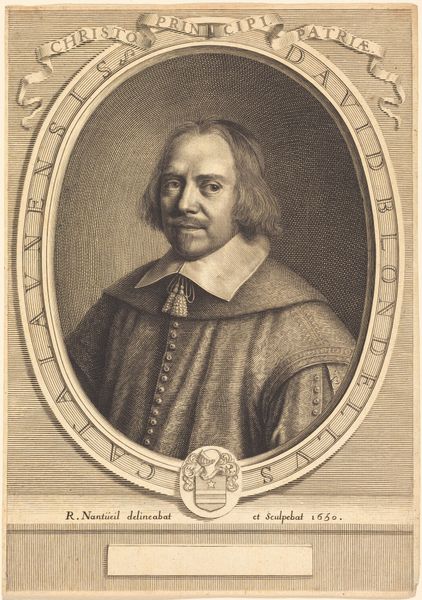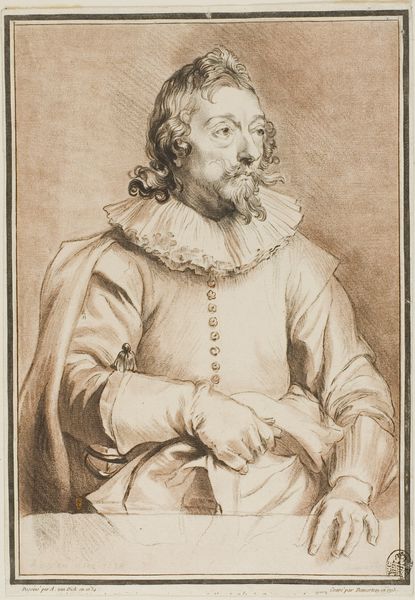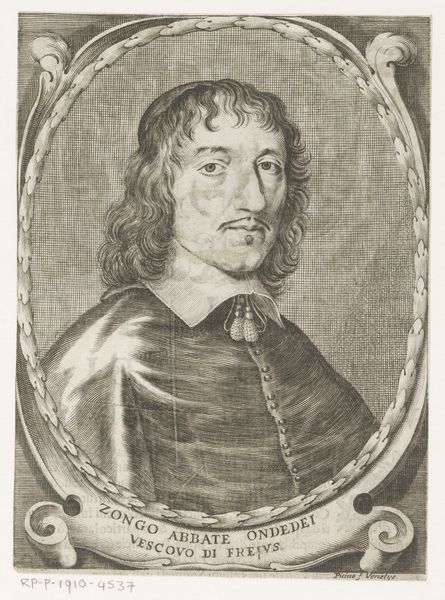
drawing, print, engraving
#
portrait
#
drawing
#
baroque
# print
#
engraving
Dimensions: sheet: 13 3/16 x 9 1/2 in. (33.5 x 24.1 cm)
Copyright: Public Domain
Curator: Here we have Claude Mellan’s 1658 engraving, “Victor le Bouthillier.” Editor: The delicacy is immediately striking. It’s all done with fine lines. The image seems austere but regal. Curator: Mellan’s prints were famed for their complex and innovative use of a single line, spiraling out from the center of the subject’s face to model the entire composition. It becomes an almost hypnotic exercise, doesn’t it? Editor: Absolutely. I’m wondering, what statements can we draw from a portrait created by a man rather than by painting? Are we meant to consider its political implications for this clergyman’s stature in French society? The medium alone is conveying a distinct meaning and accessibility compared to the elite art of painting. Curator: Perhaps. Certainly, engravings, though meticulously crafted, held the power of reproduction and wider distribution. Mellan was indeed commissioned to create images of powerful figures such as bishops and even the King. These likenesses spread their presence across society. And consider the visual language – the oak leaf frame suggesting resilience, strength… Editor: But it also invokes classical associations, right? Victory, honor… Even the coat of arms beneath the portrait reinforces his lineage, grounding him in tradition. It's all carefully constructing and conveying authority through symbolic cues. Curator: These visual strategies were deployed very consciously. We can even analyze his expression and posture: an intelligent gaze suggesting erudition, an assured posture that says, ‘I am worthy of your attention.’ Mellan successfully communicated power dynamics prevalent in French society, but by doing it solely through engraved lines... the result holds unique character. Editor: Precisely. This portrait is not just a record of someone's physical presence, but a meticulously assembled presentation of power, crafted for consumption. Looking at this engraving now, it raises significant questions around the function of religious and state power. Curator: I concur entirely. There is so much conveyed with the seemingly simplest of techniques. Editor: And this reminds me again that artworks from any era, however representational, speak to us with deliberate strategies about broader societal structures.
Comments
No comments
Be the first to comment and join the conversation on the ultimate creative platform.

